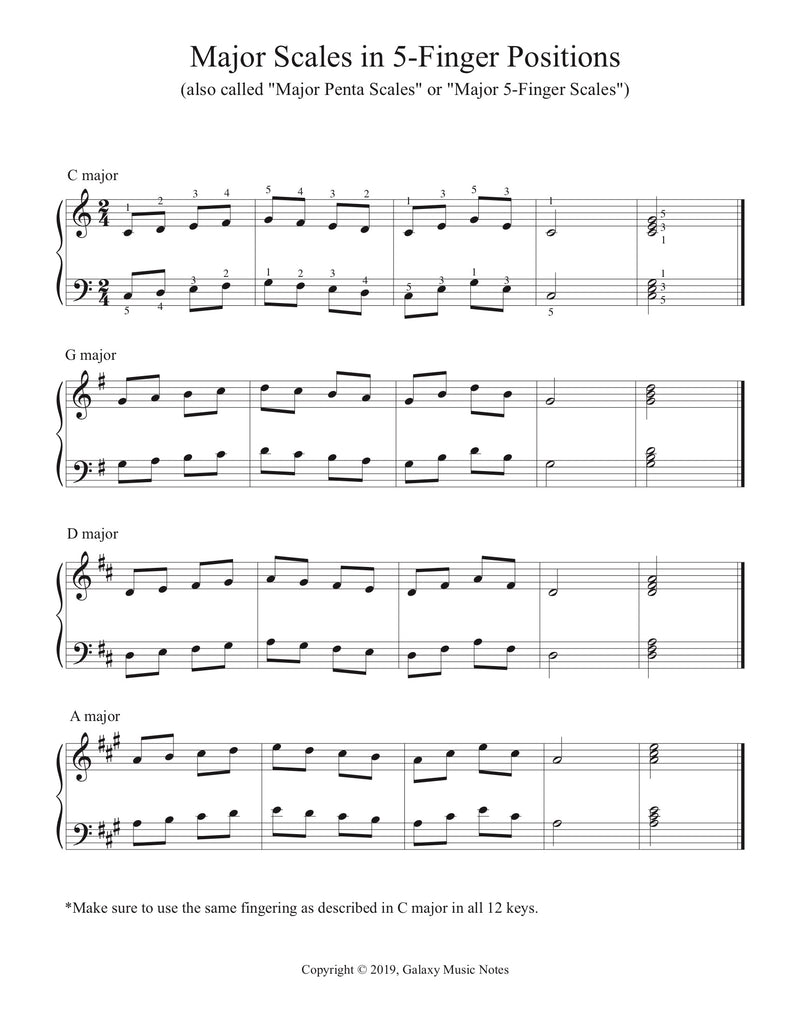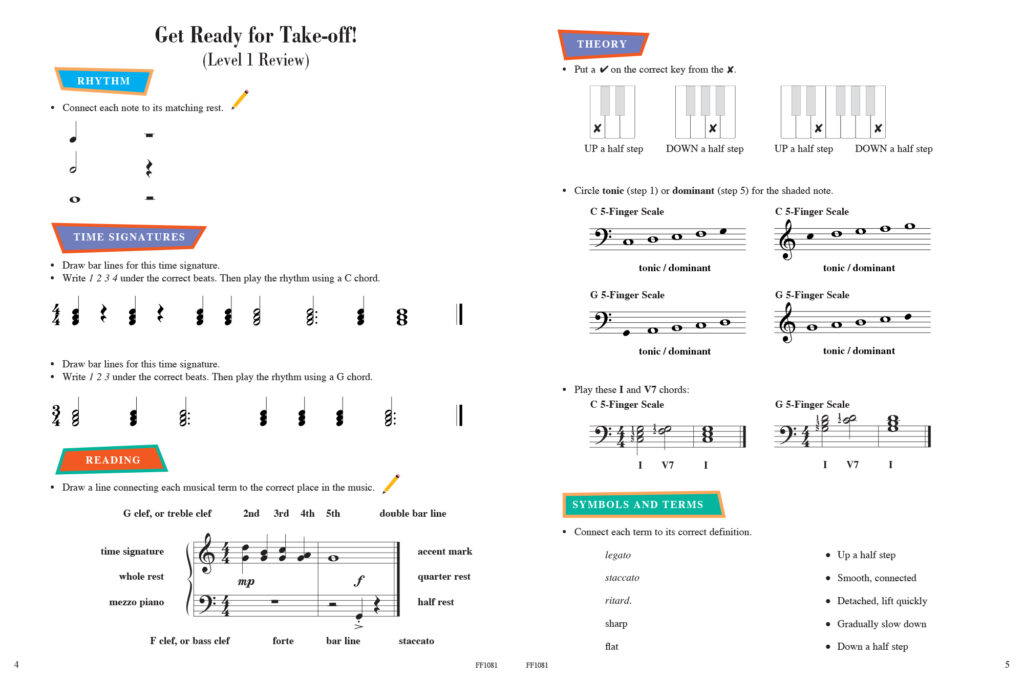To write 5 finger melodies, you need to focus on 5 notes within a particular key and use them to create simple but memorable melodies. Writing 5 finger melodies can seem like a daunting task for many beginner musicians, but with the right approach and some practice, it can become more comfortable and fulfilling.
The first step is to select a key you want to work with, and then focus on the 5 most important notes in that key. By using these notes to create simple and catchy melodies, you can make music that is easy to play and easy to remember.
Whether you’re writing for piano, guitar, or any other instrument, 5 finger melodies are a great way to get started and build your musical skills. We’ll explore some tips and tricks to help you write your own memorable 5 finger melodies.
Understanding Melodies
Writing melodies can be an exciting yet daunting task for beginners. But understanding the basics of melody writing can make it easier and enjoyable. Melodies are the catchy tunes that we hum and remember long after we have forgotten the lyrics. They are the heart of any song and can make or break it. The challenge lies in creating a melody that not only sounds good but also complements the lyrics and evokes the intended emotion. To write a good melody, one needs to understand the importance of notes, rhythm, and timing.
Notes
Notes are the building blocks of melody. They are the sounds that we create by pressing down a key on a piano or by plucking a string on a guitar. The distance between two notes is called an interval, and it determines the pitch or frequency of the sound produced. The different combinations of notes and intervals create melodies. As a beginner, it is essential to choose a key or scale that suits your voice or instrument. It will help you to stay in tune and create a cohesive melody.
Rhythm
Rhythm refers to the timing and emphasis of notes in a melody. It is the way in which the melody flows and creates a musical pattern. Rhythm can make a melody catchy or monotonic. The rhythm of a melody depends on the speed or tempo of the song and the time signature. The time signature is indicated at the beginning of a piece of music and tells the musician how many beats are in each measure and what type of note receives a beat. Practicing rhythm exercises can help improve your melody writing skills.
Timing
Timing is crucial in melody writing. It refers to the duration of each note and how long it is held. The timing of a note can create tension or release in a melody. It can also affect the emotion that the melody evokes. The timing of a melody depends on the tempo of the song, the time signature, and the phrasing. Phrasing is the way in which a melody is divided into smaller sections, and it can affect the timing and flow of a melody. It is essential to practice timing exercises to ensure that your melody is well-structured and flows smoothly.
Writing a memorable melody takes practice and patience. Understanding the basics of notes, rhythm, and timing can help you write better melodies. By experimenting with different combinations of notes, rhythm, and timing, you can create a melody that is unique and evokes the intended emotion.

Credit: galaxymusicnotes.com
The 5 Finger Technique
Are you struggling to write simple melodies on the piano? The 5 Finger Technique might be just what you need to get started with. This technique is a simple and effective way to write melodies that are easy to play and remember, even if you’re a beginner pianist.
What Is It?
The 5 Finger Technique is a basic piano technique that uses only five notes played with the five fingers of your hand. Typically, the starting note is C, and the notes are played in ascending or descending order on the white keys only.
Using the 5 Finger Technique, you can create simple melodies with just a few notes. This makes it an ideal method for novice pianists who are just learning about melody writing.
How It Works
To get started with the 5 Finger Technique, you need to select one of your hands. The right hand is usually the best option for beginners, but you can use your left if you prefer.
Next, place your hand in the C position, with your thumb on C and your other four fingers on the next four white keys in a row. Then, play the five notes in order, moving your fingers up or down the keyboard.
Once you are comfortable with playing the five notes in order, you can begin to experiment by playing them out of order. Try playing the notes in different rhythms and sequences to create a melody.
Another great way to use the 5 Finger Technique is to create harmonies. You can use your other hand to play chords that will harmonize with the melody that you create with the 5 Finger Technique.
Examples
Here are some simple examples of melodies you can create using the 5 Finger Technique:
| Example 1 | Example 2 |
|---|---|
| C-D-E-C-D-E-E-E | C-C-C-E-C-C-E-E |
As you can see, these melodies are made up of just a few notes, but they are still catchy and memorable. With practice, you can use the 5 Finger Technique to write longer, more complex melodies that will impress your friends and family.
So, if you’re looking to get started with melody writing on the piano, give the 5 Finger Technique a try. It’s a simple, effective, and fun way to create melodies that you can be proud of.
Step-by-step Guide
To write captivating 5 finger melodies, first, start with a simple melody that you can remember easily. Then, apply basic music theory to expand your melody and give it structure. Build your melody with a few variations and repeat it to ensure the tune is catchy.
Finally, record and listen to your melody to make sure it sounds right.
Are you looking for a step-by-step guide to write 5 finger melodies? Look no further! In this post, we’ll provide you with a detailed tutorial to help you create beautiful melodies using only 5 fingers. We’ll cover everything from selecting a key to adding dynamics.
Selecting A Key
Before you start writing your melody, it’s essential to choose the right key. The key you select will determine the overall mood and emotion of your melody. There are 12 different keys to choose from, and each key has its unique sound. To select the right key for your melody, consider the following factors:
- What feeling or mood are you trying to convey?
- What is your song’s overall theme?
- What is the range of the singer or instrument playing the song?
Once you’ve considered these factors, select a key that best fits your song’s mood and theme. You can use a piano or keyboard to experiment with different keys and find the one that works best for your melody.
Choosing A Chord Progression
The next step is to choose a chord progression. A chord progression is a sequence of chords that repeats throughout the song. It provides the foundation for your melody and helps establish the song’s overall structure. Choosing the right chord progression can take your melody to the next level. Here are some tips to help you choose the right chord progression:
- Consider the key you’ve selected
- Choose chords that complement the melody you have in mind
- Experiment with different chord progressions to find the one that works best
Building A Melody
Now that you’ve selected a key and chord progression, it’s time to start building your melody. Here are some tips to help you create a memorable melody.
- Start with a simple rhythm using quarter notes or eighth notes
- Limit your melody to 5 consecutive notes
- Consider the intervals between the notes (e.g., step-wise, skipping, or repeating)
- Experiment with different note lengths to add interest
Adding Dynamics
Finally, it’s time to add dynamics to your melody. Dynamics refer to the loudness or softness of notes in a song. Adding dynamic changes can make your melody more interesting and expressive. Here are some tips to help you add dynamics to your melody:
- Use crescendos (gradually getting louder) and decrescendos (gradually getting softer) to build tension and release
- Experiment with adding accents and staccatos to emphasize certain notes
- Consider the emotion or feeling you want to convey and use dynamics to support that emotion
Conclusion
Congratulations! You now have a step-by-step guide to help you write 5 finger melodies. Remember to select the right key, choose a chord progression, build a melody, and add dynamics to create a memorable and expressive melody. Now it’s time to start creating!

Credit: www.songbirdsmusicartdancecenter.com
Common Mistakes To Avoid
Learn how to write 5 finger melodies by avoiding common mistakes. Keep sentences brief, use unique and SEO-friendly content without overused words, vary expressions, and skip the conclusion paragraph to keep readers interested. Additionally, ensure your writing passes AI writing detection and sounds like a human.
Common Mistakes to Avoid When Writing 5 Finger Melodies Writing 5 finger melodies can be a fun and creative experience. However, there are some common mistakes that people tend to make when writing them. In this post, we will discuss three of these mistakes and how to avoid them. Overusing Repetition One of the biggest mistakes people make when writing 5 finger melodies is overusing repetition. While repetition can be a powerful tool in music, too much of it can make a melody sound boring and uninspired. To avoid this mistake, try adding some variation to your melody. For example, you can change the rhythm, use different notes, or add some ornamentation. This will keep your melody interesting and engaging for the listener. Ignoring Dynamics Dynamics are an essential part of music. However, when it comes to 5 finger melodies, people tend to ignore dynamics and focus solely on the notes. To avoid this mistake, try experimenting with dynamics in your melody. You can play some notes louder or softer than others to create contrast and add dimension to your melody. This will make your melody more dynamic and interesting to listen to. Forgetting to Vary Timing Timing is critical in music. However, when writing a 5 finger melody, people tend to forget about it and stick to a strict tempo. This can make your melody sound robotic and lifeless. To avoid this mistake, try varying the timing in your melody. You can speed up or slow down certain sections to create tension and release. This will add interest and excitement to your melody. Conclusion Writing 5 finger melodies is a fun and creative process that allows you to express yourself through music. However, by avoiding these common mistakes, you can take your melodies to the next level and create something truly unique and memorable.
Tips For Improvement
To write 5 finger melodies, it’s crucial to start by understanding basic music theory. Begin by learning about scales and chords, then experiment with different chord progressions. Once you have a solid foundation, use your creativity to develop unique and memorable melodies.
Consistent practice and experimentation will lead to improvement over time.
As a beginner, writing 5 finger melodies can be quite challenging. However, with consistent practice and effective tips, you can improve your melody writing skills and even write beautiful melodies that people can enjoy. Here are some tips for improvement:
Practice Makes Perfect
The more you practice, the better you become. Therefore, it’s essential to practice writing melodies every day to enhance your skills. It’s advisable to start with simple melodies and gradually progress to complex ones. Consistent practice will help you develop a better understanding of melody structure and composition, making melody writing more comfortable in the long run.
Experiment With Different Styles
Writing melodies in different styles is a great way to hone your skills. Experiment with various genres such as classical, pop, rock, jazz, and folk to learn how to write melodies that suit each style. By doing so, you’ll develop a better understanding of rhythm, harmony, and melody composition, which will make your melodies more diverse and exciting.
Listen To Music Critically
Listening to music critically can improve your melody writing skills significantly. When listening to songs, pay attention to the melody, rhythm, and overall composition. Analyze how the melody fits with the lyrics and the overall feel of the song. By doing this, you’ll develop a more critical ear, which will help you in melody composition. In conclusion, consistently practicing, experimenting with different styles, and listening to music critically are effective ways of improving your 5 finger melody writing skills. These tips will help you develop your musical composition abilities and create melodies that are pleasing to the ears.

Credit: pianoadventures.com
Frequently Asked Questions Of How To Write 5 Finger Melodies
How Do You Write A Catchy Melody?
To write a catchy melody, start by choosing a key and tempo that fits the mood you want to create. Then, experiment with different chord progressions and melodies until you find one that feels memorable and engaging. Consider adding repetition, contrast, and climax to make your melody more dynamic.
Finally, practice and refine until the melody flows smoothly and sounds great on its own.
How To Do Five Finger Chords?
To play five finger chords, place your five fingers on the piano keys, with the thumb on C, index finger on D, middle finger on E, ring finger on F and pinky finger on G. This forms the C Major chord.
Practice moving your fingers to different positions to play other chords in different keys.
How Do Musicians Write Melodies?
Musicians write melodies through a combination of creativity and technical music knowledge. They experiment with different musical notes, scales, and rhythms until they find an arrangement that sounds good. Some use a natural talent or inspiration, while others follow specific composition techniques.
It takes practice, patience, and dedication to produce a catchy and memorable melody.
How Do You Write A Pop Melody?
To write a pop melody, focus on creating a simple, catchy tune with a memorable hook. Keep the melody within a comfortable vocal range, use repetition or variation to create interest, and consider the lyrics as you compose. Experiment with chord progressions and different instruments to find the sound that works best for your melody.
Conclusion
To wrap it up, writing 5 finger melodies can seem complex, but it’s definitely achievable. Keeping in mind the techniques discussed above, you can produce stunning melodies in no time. Practicing and experimenting with different combinations can help you find your style and develop it further.
With patience and persistence, you can create melodies that will capture listeners and leave them wanting more. Focus on your creativity and let your musical instincts guide you. Happy composing!